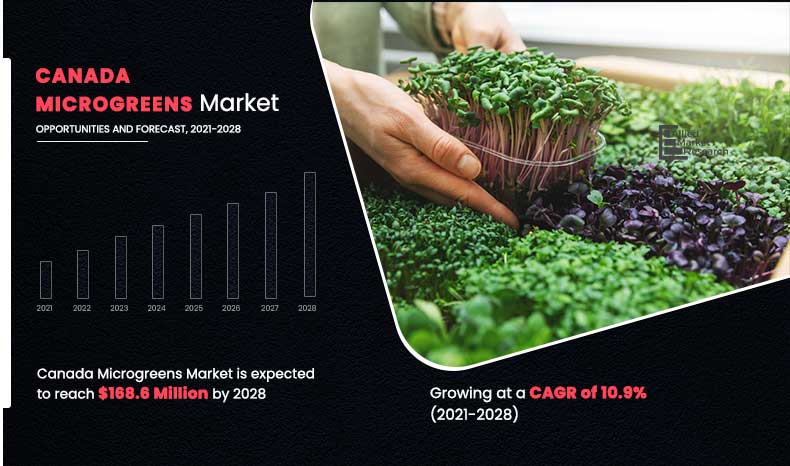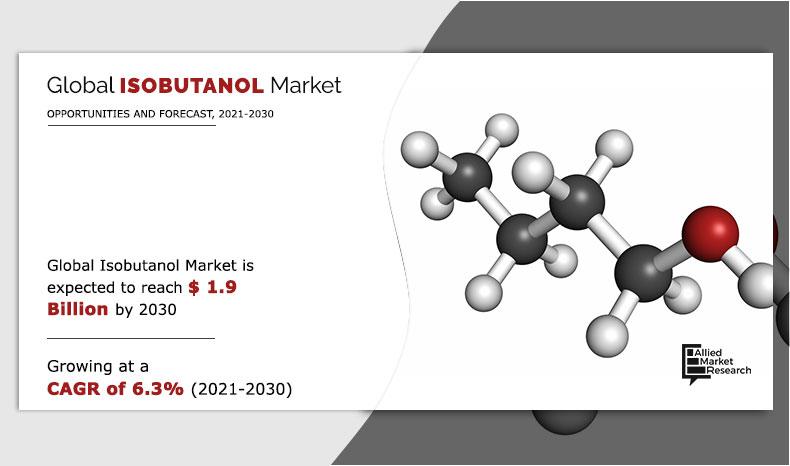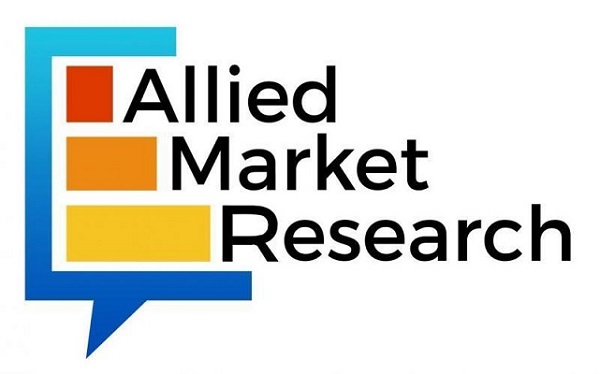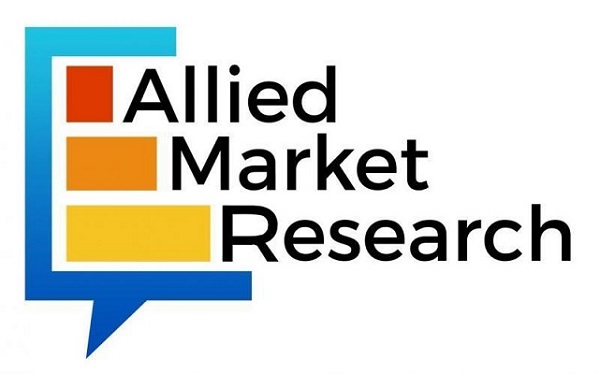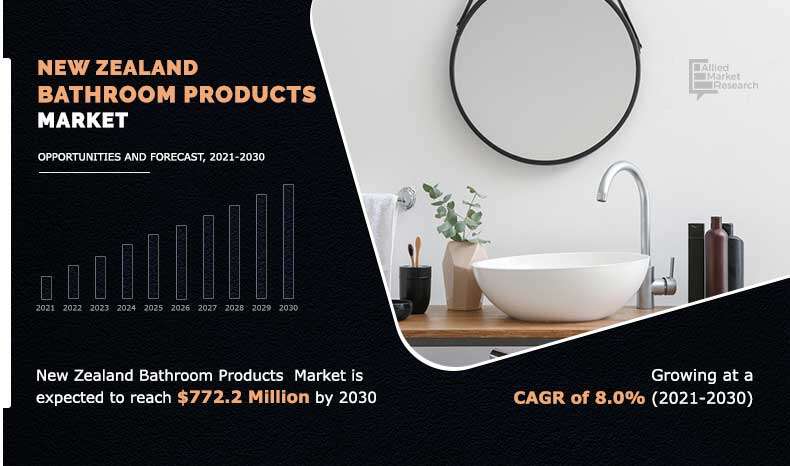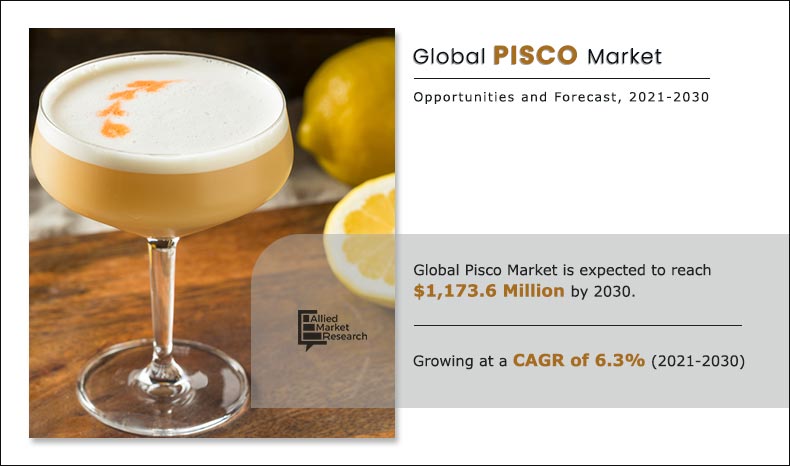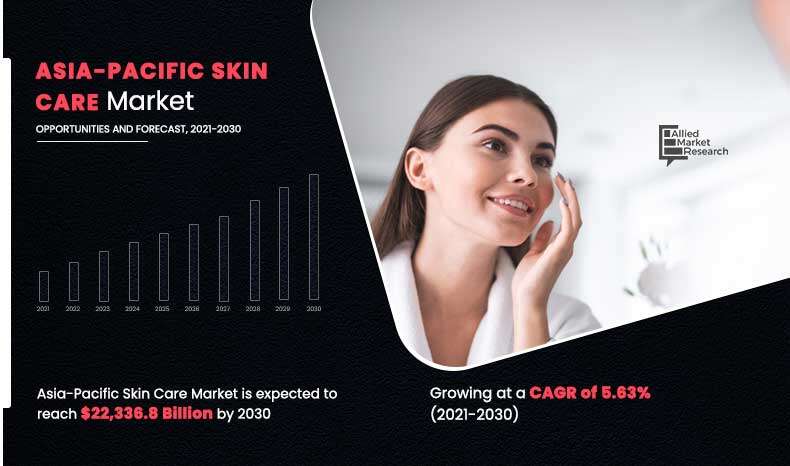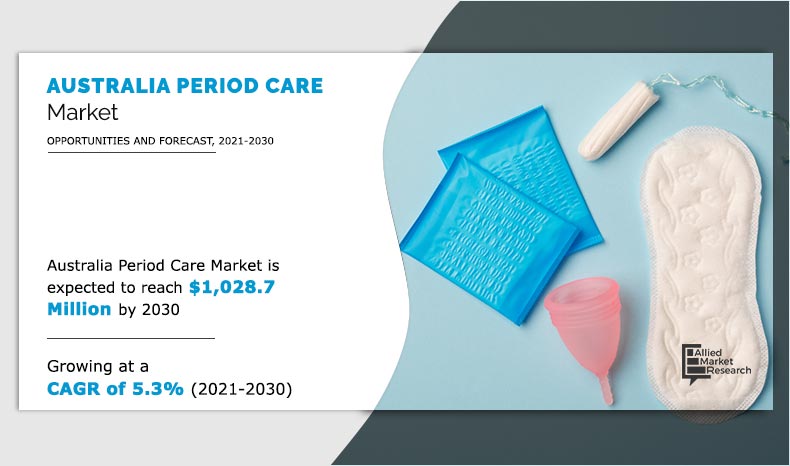The Canada microgreens market is expected to witness significant growth, owing to rise in consumer awareness regarding health benefits associated with microgreen food products such as benefits against chronic diseases to promote optimal health, longevity, and quality of life fuels demand for microgreens. Furthermore, rapid expansion of the retail industry plays a major role in the distribution of microgreens.
Canada Microgreens Market by Type, Farming and End User: opportunity analysis and industry forecast, 2021–2028,” the Canada microgreens market size was valued at $99.3 million in 2019, and is projected to reach $168.6 million by 2028, registering a CAGR of 10.9% from 2021 to 2028. In 2019, the broccoli segment dominated the Canada microgreens market, in terms of value. Broccoli microgreens are great as they contain all essential and powerful nutrients such as vitamins A, B, C, E, and K just after 10-14 days of germination. Moreover, broccoli microgreens consist large quantities of essential minerals such as manganese, zinc, copper, and magnesium that are deficient in most people. In addition, broccoli microgreens consist large amount of sulforaphane as compared to any other food. Broccoli microgreens have a tangy taste, mild peppery aroma, and crunchy texture, owing to which it creates great addition in dishes such as tofu scramble, salads, sandwiches, soups and cooked grains, which also propel the Canada microgreens market growth.
Moreover, there is an increase in adoption smartphones and other mobile devices among farmers, which provides farmers with latest development in the field of agriculture. In addition, farmers depend on broadband and other wireless technologies to catch the latest news in their field of interest and participate in practical knowledge sharing initiatives in the microgreens industry. Wide spread of internet has made agriculture resources available in a wide range of local languages, which help farmers gain awareness regarding various skills in the microgreens industry and boost growth of the microgreens market.
Download Free Sample Report: https://www.alliedmarketresearch.com/request-sample/16563
Advancements in farming technologies directly favor growth of the microgreens market, and is expected to further drive growth of the market during the forecast period. Indoor vertical farming is suitable and majorly used for cultivation of microgreens. It can be integrated with multiple technologies such big data analytics, robotics, internet of things, and artificial intelligence so that microgreens can be intensively monitored, controlled, and grown well without any agronomic constraint. However, one of the major factors that restrict growth of microgreens farming is the heavy investment required for deployment of different components in agriculture. In addition, microgreen farming uses different methods to deliver passive medium and nutrient solutions in plant roots, which is more expensive than other agriculture methods. Moreover, indoor vertical farming involves various machinery, lighting, automatic systems, and temperature controlling units, which are very expensive. In addition, high capital investments required for adopting smart solutions to produce microgreen crops is a serious challenge for farmers, which hampers growth of the market.
COVID-19 was declared a pandemic by the World Health Organization (WHO) on March 11, 2020. The outbreak of coronavirus has significantly impacted the microgreens industry along with all stages of supply chain and value chain such as labor and production inputs for farm, national, and international transport of food and other essentials. COVID-19 has further affected the consumer behavior with regards to purchasing microgreens products globally. Ultimately, decline in cultivation output as a consequence of labor and raw material shortage and partial operations led to decline in the Canada microgreens market.
The Canada microgreens market is segmented on the basis of type, farming, and end use. On the basis of type, the market is categorized into broccoli, cabbage, cauliflower, arugula, peas, radish, basil, carrots, and others. By farming, it is segregated into indoor vertical farming, commercial greenhouses, and others. By end user, it is segmented into retail, food service, and others.
For Purchase Enquiry: https://www.alliedmarketresearch.com/purchase-enquiry/16563
Key Findings Of The Study
- By type, the broccoli segment dominated the Canada microgreens market in 2019, and is expected to retain its dominance throughout the forecast period.
- Depending on farming, the indoor vertical farming segment accounted for the highest share in the Canada microgreens market growth in 2019, and is projected to grow at a CAGR of 11.1% from 2021 to 2028.
- On the basis of end user, the food service segment led the Canada microgreens market in 2019, and is expected to maintain this trend in the near future.
The key players profiled in the Canada microgreens market report are AeroFarms, Bowery Farming Inc., Charlie’s Produce, Fresh Origins, Gotham Greens,Living Earth Farm, Madar Farms, Teshuva Agricultural Projects Ltd., The Chef’s Garden Inc., and GoodLeaf Farms.
About Allied Market Research:
Allied Market Research (AMR) is a full-service market research and business-consulting wing of Allied Analytics LLP based in Portland, Oregon. Allied Market Research provides global enterprises as well as medium and small businesses with unmatched quality of “Market Research Reports” and “Business Intelligence Solutions.” AMR has a targeted view to provide business insights and consulting to assist its clients to make strategic business decisions and achieve sustainable growth in their respective market domains. AMR offers its services across 11 industry verticals including Life Sciences, Consumer Goods, Materials & Chemicals, Construction & Manufacturing, Food & Beverages, Energy & Power, Semiconductor & Electronics, Automotive & Transportation, ICT & Media, Aerospace & Defense, and BFSI.
We are in professional corporate relations with various companies and this helps us in digging out market data that helps us generate accurate research data tables and confirms utmost accuracy in our market forecasting. Each and every data presented in the reports published by us is extracted through primary interviews with top officials from leading companies of domain concerned. Our secondary data procurement methodology includes deep online and offline research and discussion with knowledgeable professionals and analysts in the industry.
